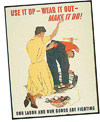  ack in the 1980s when the Cold War was still hot, the money flowed freely for defense contractors such as Los Angeles-based Northrop Grumman Corp. In fact, over a five-year span in that decade, the United States lavished $1.6 trillion on its defense budget. But when the Soviet Union imploded in 1989, the big bucks disappeared. ack in the 1980s when the Cold War was still hot, the money flowed freely for defense contractors such as Los Angeles-based Northrop Grumman Corp. In fact, over a five-year span in that decade, the United States lavished $1.6 trillion on its defense budget. But when the Soviet Union imploded in 1989, the big bucks disappeared.
The war game might have been called on account of peace, but the company still had to attend as many as 200 shows a year with booths ranging in size from 40-by-50 feet to small island and peninsula exhibits. Complicating the challenges of a slimmed-down exhibiting budget even more was the fact that an estimated 95 percent of the shows were held in nonconventional venues with varying ceiling heights and changing pillar placements, such as hotels and military bases, that made it difficult to stick with one or two configurations.
The solution, then, was to look back to the way the United States went Green during another war — World War II, when raw materials were scarce, and industry reused about 25 percent of its waste, according to the National Recycling Coalition. Or as the ubiquitous 1940s wartime slogan put it, “Use It Up, Wear It Out, Make It Do, or Do Without!”
Coming Full Circle
For almost 20 years now, Northrop Grumman has been using up its old exhibits and making do. It assembles the structures from an armada of components including wall panels, cabinets, reception counters, and stem lights.
Instead of simply throwing out its exhibit every three to five years as is common in the industry, and adding to the 251 million tons of waste generated annually, according to the EPA, the company holds on to the parts, then mixes and matches them to create the best fit for the show in question. It also pad wraps the panels to avoid using bulky wooden shipping crates that can weigh 150 to 200 pounds apiece. By doing that, the company prevents roughly 8 pounds of greenhouse gases for every 500 pounds trucked 100 miles, according to the Greenhouse Gas Protocol developed by the World Resources Institute and the World Business Council for Sustainable Development. Rolling up as much as 25,000 miles a year on the road, that means the company is preventing 6,420 pounds of greenhouse gases from polluting the air.
FAST FACT
According to the EPA, the United States generates 251 million tons of waste each year. |
 |
 |
The Greenest part of the exhibit, though, happens to be the oldest: the wall panels. Ranging in size from 4-by-8 feet to 18-by-10 feet, the approximately 250 panels are made of one-quarter-inch birch-veneered plywood over ribs of a multi-laminate material. The panels have been reused so many times — about 25 percent date back as far as the 1980s and early ‘90s — that some have wads of stickers 30 deep from the shows they’ve been shipped to. While not technically sustainable, the panels’ number and diversity allow the company to put together its exhibits in a variety of sizes and configurations. By replacing them rarely, little carbon or other natural resources are expended in creating new panels.
After 20 years, age and use eventually catches up with the panels, so Northrop Grumman is slowly replacing the old panels with ones made from FSC-certified plywood, and freshening the more senior panels with coats of low-VOC paint.
But simply reusing its plywood panels isn’t the only sustainable step the company has taken. Instead of super-size graphics whose weight and bulk would only cause trucks to spew more CO² into the air during shipping, Northrop Grumman has turned to smaller, lighter, digitally printed graphics. LEDs have taken the place of most energy-gobbling halogens, which have an average lifespan of 3,000 hours compared to 30,000 to 50,000 hours for LEDs. And while the company won’t be purchasing new carpet until later this year, it plans to buy a carbon-neutral variety, which means that it will have zero net greenhouse gases emitted during its entire life cycle from manufacture to recycling.
By recycling, reducing, and reusing everything it can, Northrop Grumman’s eco-friendly attitude proves that sometimes going Green is less about transitioning to new materials than it is about reusing materials
that already exist.
|
ONLINE RESOURCES
 For the latest Green news and eco advances, check out a few of the following Web sites. And don’t forget to visit www.GreenExhibiting.com for Green articles, resources, products, and services specific to the exhibiting industry. For the latest Green news and eco advances, check out a few of the following Web sites. And don’t forget to visit www.GreenExhibiting.com for Green articles, resources, products, and services specific to the exhibiting industry.
 Greenwire Greenwire
www.eenews.net/gw
Greenwire is Ground Zero for energy- and environmental-policy news coming out of Capitol Hill, the 50 states, and the international community.
 Treehugger.com Treehugger.com
www.treehugger.com
TreeHugger offers step-by-step how-to info on Greening your lighting, electricity, water, and clothes, as well as a buyer’s guide for Green furniture.
 Healthy Building Network Healthy Building Network
www.healthybuilding.net
Everything you need to know about what you should avoid putting in your booth, from PVC plastic to pressure-treated wood, and anything with formaldehyde. The site’s section on life-cycle analysis will explain the virtues and drawbacks of current tools for measuring a material’s overall impact on the environment.
 GreenBiz.com GreenBiz.com
www.greenbiz.com
Even in Green, the bottom line has to be black. GreenBiz.com zeroes in on how companies are adapting to the growing demand for Greener products and services, and how they leverage any success meeting those needs into their branding.
|